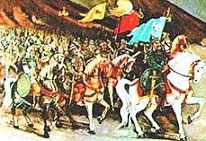Mus has the third largest plain in Eastern Anatolia. It has a rarely found natural setting, being in the highest region of Turkey, nearby Murat and Karasu rivers. Hidden between the mountains, this plain has a natural beauty, with lakes and greenery between high mountains. It is 8,196 square kilometers in area, and has a population of over 410 thousand (2016). Main economy is based on agriculture and live stock, also carpet and kilim weaving takes an important place in the city.
Neighboring provinces are Bitlis, Agri, Bingöl, Diyarbakir, Batman and Erzurum. It has a typical continental climate and stands on tectonic faults of Anatolia. There are five districts of Mus; Bulanik, Malazgirt, Varto, Hasköy and Korkut.
The province dates back to the 6th century AD, and now it shelters the remains of a couple of citadels and the Aslanhane Caravanserai. There are also impressive mosques from the Seljuk period, like the Alaeddin Pasa, Haci Seref and Ulu Mosques. Mus had been under the reign of Urartu, Median, Persian, Byzantine, Sasani civilizations. The province had entered under the reign of Turkish civilizations following the 1071 Malazgirt (Manzikert) Battle; Seljuk and Anatolian States for years and than Ottoman Empire after the 1515 Caldiran Battle.
 The town of Malazgirt is an important and famous name in Turkish history being the site of the battle of Malazgirt which led the first Turks setting their foot in Anatolia. At that time Manzikert was an important trading post of the ancient Kingdom of Armenia. Here in 1071 the Byzantine emperor Romanus IV fought against Sultan Alp Arslan of the Seljuk Turks. Although Alp Arslan tried to come to a peace agreement before the battle and despite the fact that Romanus was depending heavily on unreliable Norman mercenaries, the emperor refused to negotiate. After this inevitable battle, Alp Arslan defeated the Byzantines and captured Romanus. This victory opened the doors of Anatolia to the Turks, and this date is considered to be the beginning of the Turks and that of Islam in Anatolia. It's also following this date that the Turks fully conquered the whole of Anatolia and established the Anatolian Seljuk state.
The town of Malazgirt is an important and famous name in Turkish history being the site of the battle of Malazgirt which led the first Turks setting their foot in Anatolia. At that time Manzikert was an important trading post of the ancient Kingdom of Armenia. Here in 1071 the Byzantine emperor Romanus IV fought against Sultan Alp Arslan of the Seljuk Turks. Although Alp Arslan tried to come to a peace agreement before the battle and despite the fact that Romanus was depending heavily on unreliable Norman mercenaries, the emperor refused to negotiate. After this inevitable battle, Alp Arslan defeated the Byzantines and captured Romanus. This victory opened the doors of Anatolia to the Turks, and this date is considered to be the beginning of the Turks and that of Islam in Anatolia. It's also following this date that the Turks fully conquered the whole of Anatolia and established the Anatolian Seljuk state.

